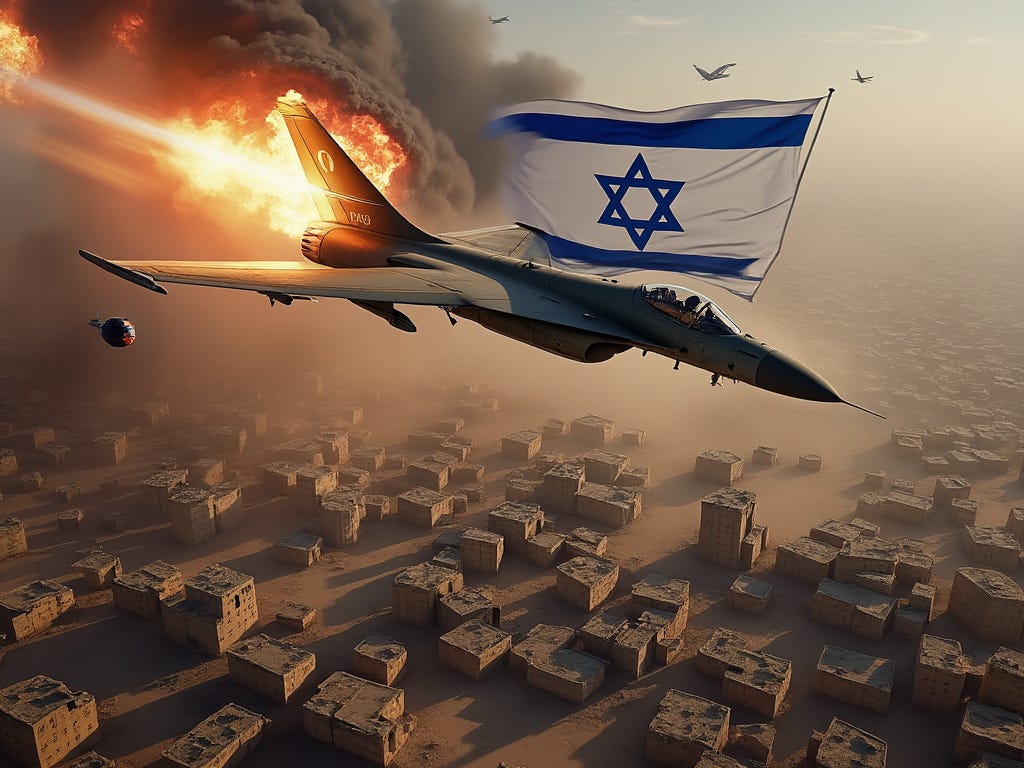Israeli Airstrikes on Houthi Strongholds in Yemen
Escalation in Israel-Iran-Backed Conflict: Israeli Airstrikes on Yemen, in addition to Gaza and South Lebanon.
Escalation in Israel-Iran-Backed Conflict: Israeli Airstrikes on Yemen
The ongoing conflict between Israel and Iran-backed groups such as Hezbollah and the Houthis has escalated dramatically with recent developments. This intensifying situation now spans multiple fronts, involving several actors and regions. The conflict includes significant military engagements between Israel and the Houthi militia in Yemen, continued Israeli airstrikes on Hezbollah strongholds in Beirut and southern Lebanon, apart from the ongoing hostilities with Hamas in Gaza. Since the Israel-Hamas war erupted almost a year ago, violence has spread across the region, raising fears of a broader, multi-front conflict involving Iran-backed factions. Here are the key aspects of this unfolding scenario.
Israeli Airstrikes on Yemen
On Sunday, September 29, 2024, Israel launched a large-scale aerial assault on Houthi-controlled targets in Yemen. This aggressive operation was carried out with extensive military resources, signaling a serious escalation in the conflict.
A significant number of Israeli aircraft, including fighter jets, reconnaissance planes, and aerial tankers, were involved in the mission.
The strikes were primarily focused on military infrastructure in Yemen's Ras Issa and Hodeidah regions, key strategic locations for the Houthis.
Israeli forces targeted power stations, oil-importing ports, and facilities allegedly used by the Houthis for arms transfers and other military operations.
This attack was geographically significant, with targets located over 1,800 kilometres (1,120 miles) away from Israel’s borders, highlighting Israel’s long-range operational capabilities.
Houthi Missile Attack on Israel
The Israeli airstrikes were in direct response to a recent missile attack launched by the Houthis:
On Saturday, September 28, 2024, the Houthis claimed responsibility for firing a ballistic missile aimed at Israel’s Ben Gurion Airport, near Tel Aviv.
The timing of this attack was particularly symbolic, coinciding with Israeli Prime Minister Benjamin Netanyahu’s return from addressing the United Nations General Assembly.
Israeli air defence systems successfully intercepted the missile before it could cause any damage, mitigating what could have been a severe escalation.
Hezbollah Leadership Losses in Israeli Strikes in Lebanon
Amidst ongoing strikes, Hezbollah suffered significant losses, adding to the regional tension. On Sunday, the Lebanese militant group confirmed the death of high-ranking official Nabil Kaouk in an Israeli airstrike. This announcement came just a day after Hezbollah acknowledged the killing of multiple commanders, including their long-standing leader, Hassan Nasrallah. Israel has been targeting Hezbollah positions in Lebanon as part of its broader campaign against Iran-backed militant groups, intensifying the conflict in the region.
The near-daily exchanges of strikes between Hezbollah and Israel have raised fears of a wider regional conflict, especially following the initiation of the Israel-Hamas war nearly a year ago, on October 7, 2023. In addition, the United Nations has reported that the number of displaced people from southern Lebanon has more than doubled, now exceeding 211,000, further amplifying the humanitarian crisis.
Ongoing Regional Tensions
The current hostilities are part of a broader pattern of military clashes and political tensions involving various players in the region:
Since late 2023, the Houthis have been conducting attacks against Israeli interests, particularly targeting vessels in the Red Sea. This maritime activity has drawn international attention, given the global significance of the Red Sea shipping routes.
Israel's airstrike in Hodeidah is not the first such operation. In July 2024, Israel launched a retaliatory attack following a deadly drone strike in Tel Aviv, which was linked to Houthi operations.
The Houthis are part of the broader "axis of resistance," which includes Iran, Hezbollah, Hamas, and other factions united in opposition to Israel, raising concerns about wider regional implications.
International Implications of the Conflict
The ongoing military actions between Israel and the Houthis represent more than just a localised conflict. It has broader regional and international ramifications:
Israel’s ability to strike targets deep in Yemen demonstrates its resolve to address distant threats, potentially signalling to other regional actors of its military reach and capabilities.
Reports suggest that this latest Israeli operation was coordinated with the United States, indicating possible Western support for the military actions. This cooperation could further complicate diplomatic efforts in the already volatile Middle East.
The escalation may draw other regional actors into the fray, risking a broader conflict that could destabilise not only the Middle East but also global energy markets and diplomatic relations.
Summing Up
As both sides continue to engage militarily, the situation remains fluid, and further developments are likely. The conflict’s complexity, involving multiple actors and interests, will continue to challenge diplomatic efforts and international stability in the region. This latest escalation underscores the fragile nature of Middle Eastern geopolitics and the risks of broader warfare.





…….. The conflict’s complexity is due to multiple actors and interests, which have the capacity to divide the whole world into two groups/parts. There is no hope of international stability, in near future….., rather the big players are not interested to bring about the peace till they themselves are directly affected…
ਦਿਨੋਂ ਦਿਨ ਯੁੱਧ ਦੀ ਸਥਿਤੀ ਗੰਭੀਰ ਤੇ ਪੇਚੀਦਾ ਬਣਦੀ ਜਾ ਰਹੀ ਹੈ।
ਦੁਨੀਆਂ ਇਸ ਅੱਗ ਨੂੰ ਬੈਸੰਤਰ ਸਮਝ ਰਹੀ ਹੈ ਪਰ ਇਹ ਸੱਭ ਨੂੰ ਆਪਣੀ ਲਪੇਟ ਵਿੱਚ ਲੈ ਸਕਦੀ ਹੈ ।
ਅੱਜ ਦਾ ਮਨੁੱਖ ਆਪਣੇ ਘਰ ਪ੍ਰੀਵਾਰ ਤੋਂ ਸ਼ੁਰੂ ਹੋ ਕੇ ਸੰਸਾਰ ਪੱਧਰ ਤੱਕ ਜੰਗ ਯੁੱਧ ਹੀ ਲੜ ਰਿਹਾ ਹੈ। ਬੱਸ ਤਬਾਹੀ ਦਾ ਆਲਮ ਹਰ ਰੋਜ ਨੇੜੇ ਆਉਂਦਾ ਦਿਖਾਈ ਦੇ ਰਿਹਾ ਹੈ ਜੀ।